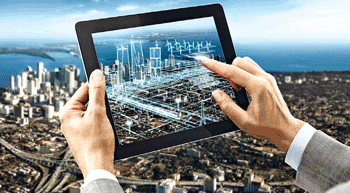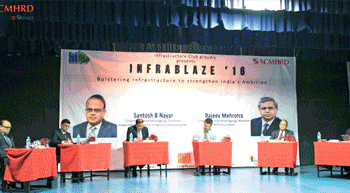The Smart Cities Mission ensures that systems and regulations that balance growth, business friendliness and public interest are in place, say Upendra Joshi and Shivanshu Thaplyal.
FlashNews:
IWAI Signs ₹13.5 Billion MoUs to Boost Ganga Waterway in Uttar Pradesh
MOVIN Launches Healthcare Logistics Vertical to Tap India’s $638 Billion Industry
Atlanta Electricals Secures ₹2.98 Billion Transformer Orders from GETCO
Waaree Group Wins 10 MWh BESS Order in Tamil Nadu, Expands Domestic Storage Manufacturing
Cabinet Approves ₹27.8 Billion Rail Multitracking to Boost Gujarat and Maharashtra Connectivity
BC Jindal Group Secures 150 MW RTC Power Deal with SECI
India’s Data Centre Revenue to Hit ₹200 Billion By FY2028, Driven by AI, Cloud and 5G: Crisil Ratings
Sanchar Saathi Recovers 50,000 Phones in October; Crosses 700,000 Nationwide Since Launch
Akasa Air Expands Northeast Connectivity, Adds Dibrugarh as 32nd Destination
Ministry of Power Advances India Energy Stack with Taskforce Review of Strategy and Architecture
Vaishnaw Stresses Industry-Aligned Skilling to Power India’s Digital and Electronics Growth
DGCA Issues Urgent Advisory as Ethiopian Ash Cloud Enters Indian Airspace
DFCCIL Freight Operations Surge 48% as Corridors, Terminals Expand
SMFCL Board Clears $3 Billion Borrowing Plan to Accelerate Maritime Infrastructure Financing
Air India Restores Codeshare with Air Canada to Expand India-Canada Flight Network
Indian Railways Freight Loading Surges Past 1 Billion Tonne Milestone This Fiscal
IWAI Signs MoUs to Boost Assam’s Inland Waterways and Industrial Logistics
Air India Express to Launch Services from Navi Mumbai International Airport on Day One
Tata Power, Druk Green Power Corp. Seal ₹1.31 Trillion Pact for Bhutan’s Largest PPP Hydro Project
Urban Growth Corridors
India is one of the fastest growing and most populated economies in the world. By 2030, the urban areas would contribute 75 per cent of India's GDP and house 590 million people, about 40 per cent of the population.
The warehousing sector is going to experience a sea change in its structure
With the total warehousing space requirement in the country´s top seven markets expected to grow from 621 mn sq ft in 2016 to 839 mn sq ft by 2020, the warehousing sector has shown tremendous traction in the past couple of years. Further, investment in warehousing can provide an opportunity of realising returns in the range of 10-24 per cent per annum.
GST will help companies reduce logistics costs by up to 1.5percent
According to me every move has an advantage and a disadvantage. The business success depends on the ability of a company to factor in variables and continue to stand firm.
GST will reduce the share of the unorganised sector in warehousing
The GST is a value-added tax that will replace all other indirect taxes in India. One purpose of the GST is to make taxes ´destination´ based rather than origin based, or ´efficiency´ based rather than ´regulation´ based.
Indian logistics saw better growth while globally there was muted demand
Big is definitely better for the warehousing services focusing on serving organised sectors. Economies of scale, cheaper land costs, more automation and higher labour utilisation are some of the key benefits.
Steel sector contributes 2% to GDP in 2015-16
The Indian steel sector´s contribution to overall Gross Domestic Product of the country was nearly 2 per cent during 2015-16.
Steel sector contributes 2percent to GDP in 2015-16
The Indian steel sectorÂ’s contribution to overall Gross Domestic Product of the country was nearly 2 per cent during 2015-16.
World-class infrastructure is the need of the hour
Infrablaze 2016, a flagship event of the Symbiosis Centre for Management and Human Resource Development (SCMHRD), witnessed an audience made up of students and equally enthusiastic academicians.
Slow investment recovery holding back growth | India Ratings
India Ratings and Research (Ind-Ra) has revised its gross domestic product (GDP) growth forecast for FY17 upwards to 7.8 per cent from its earlier forecast of 7.7 per cent. The upward revision has been prompted by the progress of monsoon and the sowing of kharif crops so far. With the exception of the East and Northeast, the rainfall in other regions of the country has been more than the long period average.









